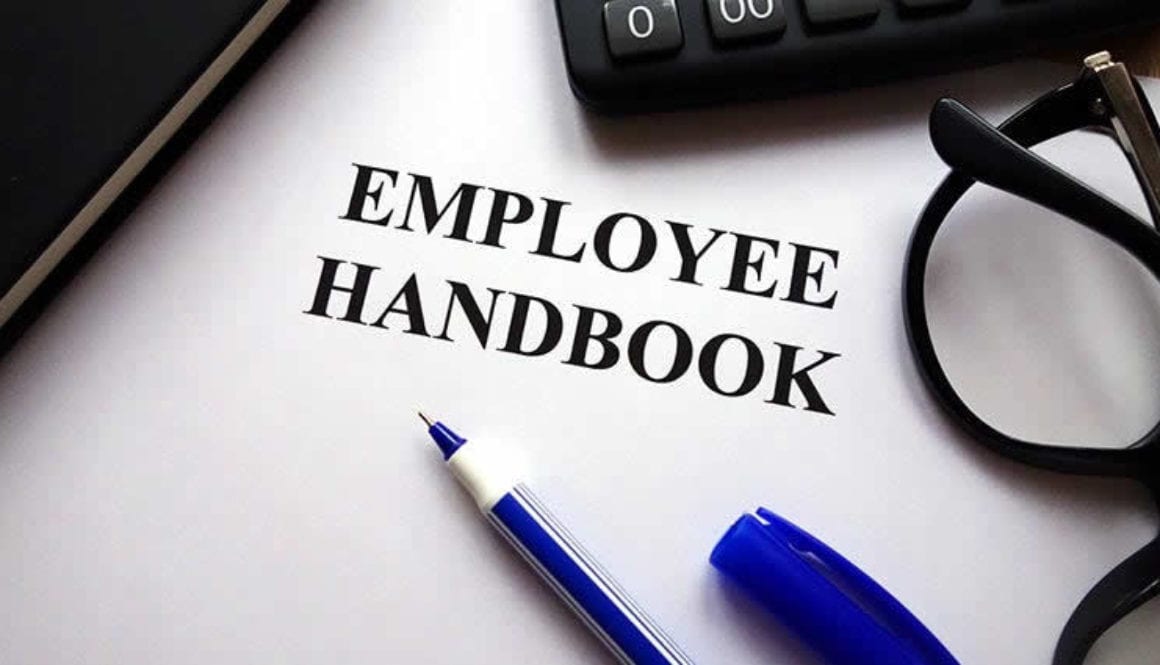Does Your Business Need an Employee Handbook?
An employee handbook is a tool that employers often consider a low priority. They’re nice to have, but there isn’t a sense of urgency in creating one. Unfortunately, that’s a costly mistake many business owners make.
Why have an employee handbook?
Developing and issuing an employee handbook is an important tool to set guidelines, expectations and even outline the mission and culture of your organization. Your employees are your team – and like every team, they need to know the rules of the game. What is expected of them; what can they expect from you; and how does their role fit into the larger goal of the organization? An employee handbook outlines each of these – providing team members with the information they need to excel. Organizations with a concise employee handbook have teams that work together, striving for a professional, respectful workplace. Organizations without an employee handbook may find their staff members lost at sea when it comes to expectations and goals.
Another important aspect of the handbook is non-discrimination. The rules are set for every employee and should be administered equally. With an employee handbook in place, it’s easier for every employee to follow the rules and guidelines.
So, how do you create an employee handbook?
One of the most common barriers to developing an employee handbook is knowing where to start. What should be included and what should be left out? While there are online templates that businesses can use to get the ball rolling, they are often missing key components and/or include laws and language which may not even apply to your business. The best course of action is to hire a qualified HR Consultant or employment attorney to draft your compliant employee handbook, tailored specifically to your company’s needs.
Some of the basics that should be included are expectations the company has of the employee. You may choose to include your mission statement and guidelines for employees to contribute to the mission. Legal requirements like non-discrimination and harassment laws, and company policies like sick leave, dress code, and performance standards should be prominently included to affirm an organization of compliance and respect.
When should employees be issued a handbook?
All new employees should receive a copy of the employee handbook on their first day on the job. They should be asked to read through the handbook and ask any necessary questions. For established employees, a new handbook should be issued to the team with the same opportunity to request further information if needed.
Do employees need to verify that they’ve received the handbook?
Businesses should ask for verification the employee has received, read, and understood the handbook. A signed acknowledgement should be in every employee’s personnel file.
A hard copy handbook isn’t always necessary: an online version is acceptable as long as all employees have access to the handbook and acknowledge that they have received it via an online signature. Online handbooks are easier to update, as well. Keep in mind that you must notify all employees whenever an update has been made and what the update entails.
What are the legal benefits of having a handbook?
For many organizations, an employee handbook is an affirmative defense in the event of a charge of harassment or discrimination. If your employee handbook specifically prohibits sexual harassment or discrimination in the workplace and an employee has violated that rule, affirmation they knew the rule and chose to disregard it can shift some liability away from the company. While the handbook doesn’t indemnify an organization (you’ll still need to investigate and resolve any complaints), it can help bolster a defense in the event of a charge.
The employee handbook can also present an affirmative defense in the event of a wrongful discharge claim. If your handbook outlines expectations that were not met, your company may be able to demonstrate the legitimate business reason for the dismissal. Additionally, if an employee was terminated for cause, you may be able to defend against an unemployment insurance claim as well. If policies were violated and disciplinary steps were followed, the employee’s claim for benefits could be denied.
An employee handbook gives your staff members the information they need to work as a cohesive team. It sets the tone for a respectful workplace that values employee rights and provides equal benefits for all. All businesses should prioritize creating a strong employee handbook, and issuing one to every staff member.
